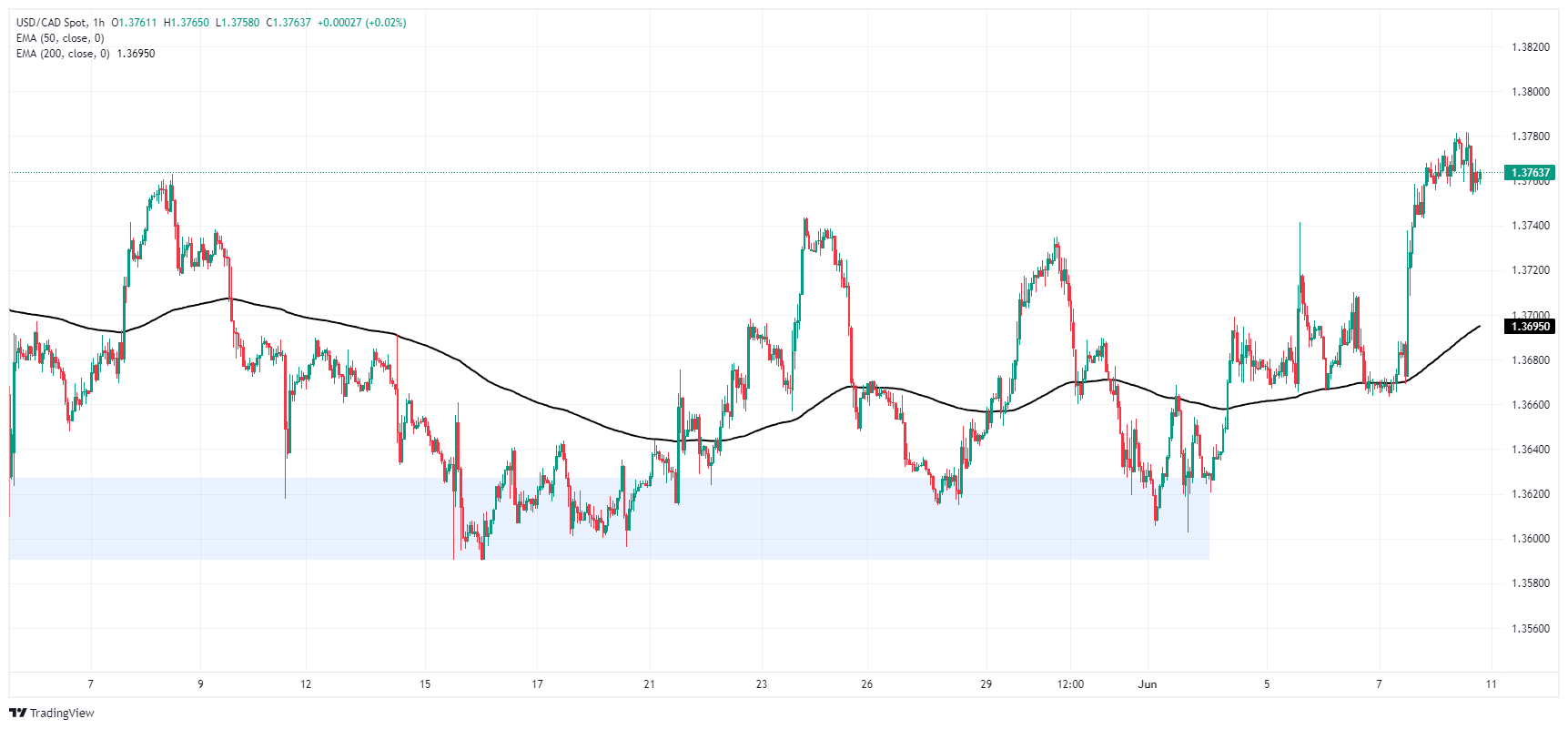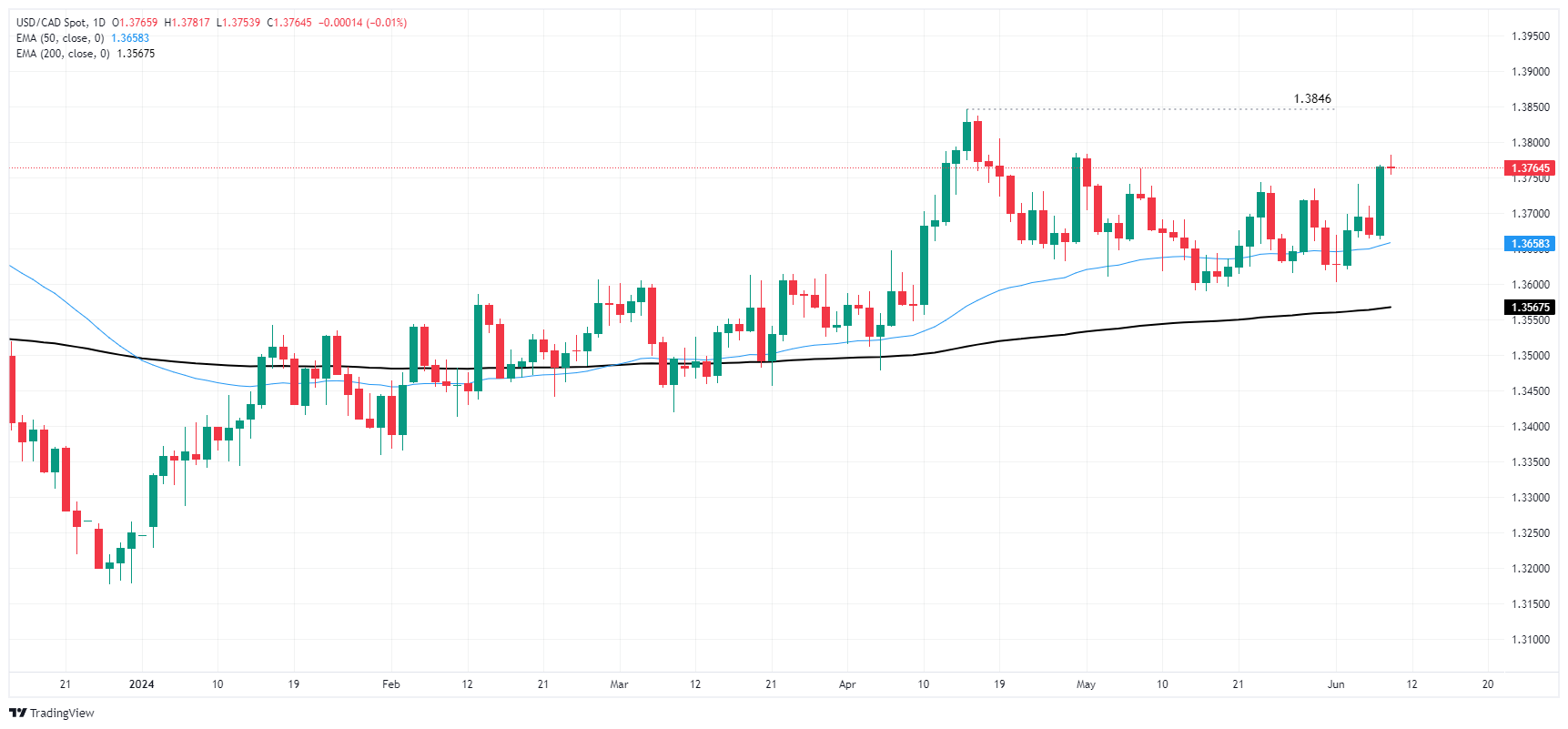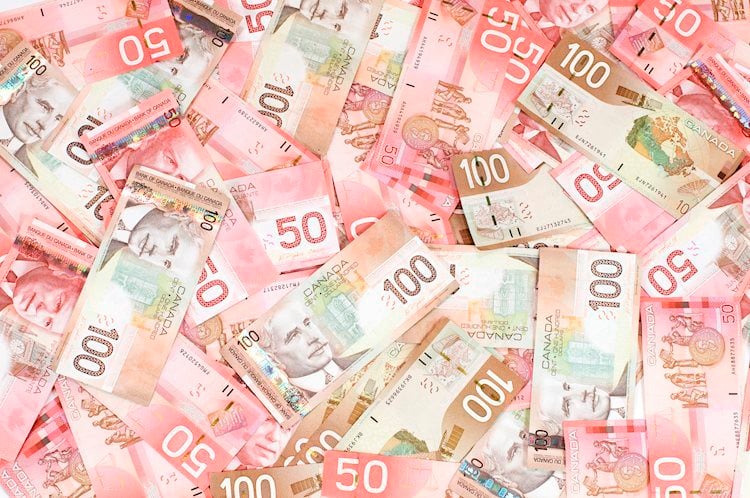- Canadian Dollar mostly mixed on Monday, flat against USD.
- Canada mostly absent from economic calendar this week.
- Speech from BoC Macklem due in the midweek market session.
The Canadian Dollar (CAD) is holding flat against the Greenback to kick off another trading week as momentum in the CAD space remains thin. Markets are still recovering from Friday’s jobs report, and volatility remains high despite a lack of momentum.
Canada is functionally absent from the economic calendar on Monday with strictly low-tier data on offer throughout the week. A speech from Bank of Canada (BoC) Governor Tiff Macklem will be released on Wednesday when the BoC head participates in a panel discussion ironically titled “Overcoming Economic Volatility”. However, the BoC Governor’s words are likely to be overshadowed by a US Consumer Price Index (CPI) and Federal Reserve (Fed) rate call double-header also due on Wednesday.
Daily digest market movers: Data-light CAD goes with the flows
- The Canadian Dollar is holding flat against its closest peer, the US Dollar, on a data-deprived Monday as the Friday NFP hangover continues.
- Investors are looking ahead to key US inflation data due on Wednesday, as well as the Fed’s update to its interest rate projections for the next few years.
- The NY Fed published a consumer survey on Monday that revealed consumers still don’t feel great about the long-term inflation outlook.
- Median NY Fed survey results showed that consumer one-year inflation expectations ticked down to 3.2% from the previous 3.3%, but five-year inflation expectations rose to 3.0% from the previous 2.8%.
- BoC”s Macklem is expected to get drowned out on Wednesday by shifts in Fed rate expectations.
Canadian Dollar PRICE Today
The table below shows the percentage change of Canadian Dollar (CAD) against listed major currencies today. Canadian Dollar was the strongest against the Japanese Yen.
| USD | EUR | GBP | JPY | CAD | AUD | NZD | CHF | |
|---|---|---|---|---|---|---|---|---|
| USD | 0.35% | -0.08% | 0.13% | 0.03% | -0.42% | -0.30% | -0.10% | |
| EUR | -0.35% | -0.10% | 0.03% | -0.08% | -0.50% | -0.40% | -0.20% | |
| GBP | 0.08% | 0.10% | 0.24% | 0.03% | -0.40% | -0.30% | -0.11% | |
| JPY | -0.13% | -0.03% | -0.24% | -0.09% | -0.61% | -0.52% | -0.18% | |
| CAD | -0.03% | 0.08% | -0.03% | 0.09% | -0.41% | -0.33% | -0.13% | |
| AUD | 0.42% | 0.50% | 0.40% | 0.61% | 0.41% | 0.10% | 0.30% | |
| NZD | 0.30% | 0.40% | 0.30% | 0.52% | 0.33% | -0.10% | 0.20% | |
| CHF | 0.10% | 0.20% | 0.11% | 0.18% | 0.13% | -0.30% | -0.20% |
The heat map shows percentage changes of major currencies against each other. The base currency is picked from the left column, while the quote currency is picked from the top row. For example, if you pick the Canadian Dollar from the left column and move along the horizontal line to the US Dollar, the percentage change displayed in the box will represent CAD (base)/USD (quote).
Technical analysis: Canadian Dollar shuffles in place, USD/CAD stuck just below 1.3800
The Canadian Dollar (CAD) is giving a firmly mixed performance on Monday, holding flat against the US Dollar (USD) as a lack of momentum plagues the key CAD pairing. The CAD gained around a quarter of a percent against the Euro (EUR), but shed four-tenths of one percent against the Australian Dollar (AUD).
USD/CAD is hung up on thin chart movement just beneath the 1.3800 handle. The pair’s topside push from last Friday failed to extend into another day of gains, but sellers have been unable to regain control.
The 1.3780 level is the target for intraday buyers to beat, while short positions will need to accumulate enough pressure to drive bids back to the 1.3700 handle. A lack of trend is plaguing USD/CAD with the pair up 3.9% in 2024 but remaining down from the year’s peak bids at 1.3846 set back in mid-April.
USD/CAD hourly chart
USD/CAD daily chart
Canadian Dollar FAQs
The key factors driving the Canadian Dollar (CAD) are the level of interest rates set by the Bank of Canada (BoC), the price of Oil, Canada’s largest export, the health of its economy, inflation and the Trade Balance, which is the difference between the value of Canada’s exports versus its imports. Other factors include market sentiment – whether investors are taking on more risky assets (risk-on) or seeking safe-havens (risk-off) – with risk-on being CAD-positive. As its largest trading partner, the health of the US economy is also a key factor influencing the Canadian Dollar.
The Bank of Canada (BoC) has a significant influence on the Canadian Dollar by setting the level of interest rates that banks can lend to one another. This influences the level of interest rates for everyone. The main goal of the BoC is to maintain inflation at 1-3% by adjusting interest rates up or down. Relatively higher interest rates tend to be positive for the CAD. The Bank of Canada can also use quantitative easing and tightening to influence credit conditions, with the former CAD-negative and the latter CAD-positive.
The price of Oil is a key factor impacting the value of the Canadian Dollar. Petroleum is Canada’s biggest export, so Oil price tends to have an immediate impact on the CAD value. Generally, if Oil price rises CAD also goes up, as aggregate demand for the currency increases. The opposite is the case if the price of Oil falls. Higher Oil prices also tend to result in a greater likelihood of a positive Trade Balance, which is also supportive of the CAD.
While inflation had always traditionally been thought of as a negative factor for a currency since it lowers the value of money, the opposite has actually been the case in modern times with the relaxation of cross-border capital controls. Higher inflation tends to lead central banks to put up interest rates which attracts more capital inflows from global investors seeking a lucrative place to keep their money. This increases demand for the local currency, which in Canada’s case is the Canadian Dollar.
Macroeconomic data releases gauge the health of the economy and can have an impact on the Canadian Dollar. Indicators such as GDP, Manufacturing and Services PMIs, employment, and consumer sentiment surveys can all influence the direction of the CAD. A strong economy is good for the Canadian Dollar. Not only does it attract more foreign investment but it may encourage the Bank of Canada to put up interest rates, leading to a stronger currency. If economic data is weak, however, the CAD is likely to fall.
